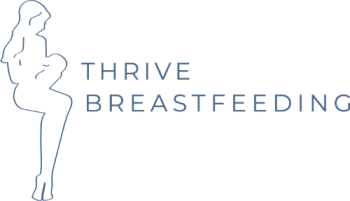Most mothers face the dreaded latch problems at one time or another. Good news! Breastfeeding should not hurt.
This article explains the best ways to solve common latch problems and other breastfeeding issues. Whether you’re just getting started with breastfeeding or are a veteran mom who is having trouble, here are some tips that can help.
First, what’s a latch? A latch is when your newborn attaches to the breast. It can be a good or bad experience for you and your little one, depending on where your nipple lands in the baby’s mouth. Many women worry that they’re not doing it correctly, so they may stop breastfeeding before giving it a chance. An incorrect latch is often painful and can lead to damaged nipple tissue. The solution is often as easy as correctly positioning your baby for a deep, pain-free latch.
The key to a good latch is for your baby’s lips to be flanged—peeled out like a fish—so your nipple lands at the juncture of the baby’s hard and soft palate.
Common Latch Problems with Breastfeeding
Problem 1: The baby is too far away from mom when latching
Solution: Position your baby “tummy to mummy” so close to you that both your tummies are touching
Latch Tip: Get support from an IBCLC, who can coach you through what a good latch looks like!
Problem 2: The baby is positioned in the wrong direction from the breast
Solution: In the cross-cradle hold, the baby’s chest and hips should be stacked and turned in toward you
Problem 3: The baby isn’t latched on far enough and nursing is painful
Solution:
- Latch baby deeper with most, if not all, of the areola in their mouth
- Once you feel their mouth on your breast, latch the baby deep by bringing him up and over your nipple
- Listen! No clicking or smacking sounds with a good latch
Tips for Latching
1. If breasts are engorged, hand express some milk off prior to latching to make latching easier
2. Sometimes, especially with a newborn, your baby may fall asleep while you are feeding. Listen for rhythmic suckling throughout the feeding
3. Help your baby latch. For example, before bringing your baby to breast, gently stimulate your nipple to stretch it out a little bit. An everted nipple is easier to latch onto
How to get a Good Latch
Avoid latch problems by learning the mechanics of a good latch so that breastfeeding is a pleasurable experience. A good latch also ensures efficient breast milk intake so that your baby gets the nutrients they need to grow. So often, a mother will think she has a good latch when she does not; This can lead to sore nipples and ineffective nursing.
Bottom-line
Mastering a good latch is essential for breastfeeding success. If you’re experiencing pain or just want to make sure your latch is ideal, reach out to Thrive Breastfeeding for more help!
